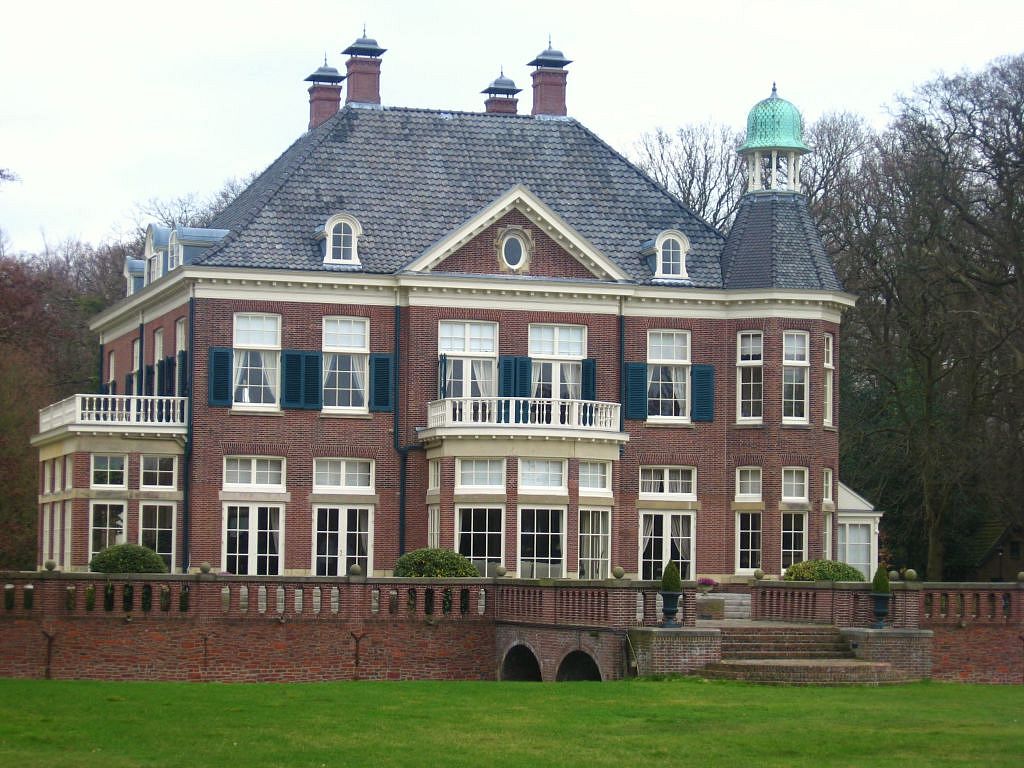#8334. Dutch Manor with Symmetrical Brick Facade and Distinctive Mansard Roof
The image showcases a magnificent example of Dutch manor architecture, characteristic of the 17th-18th centuries. This two-story red brick mansion features a symmetrical facade and a steep mansard roof covered with slate tiles. The facade demonstrates impeccable symmetry — a classical technique emphasizing the building's prestigious status.
Particular attention is drawn to the architectural details: the central pediment with an oval window, four distinctive brick chimneys with decorative caps, and a domed turret with a green copper roof located on the right side of the building. The contrast between the red brick and white elements framing the windows and cornices creates an exquisite color composition.
In the foreground, a brick parapet with a balustrade forms a terrace in front of the house, and a small bridge over a moat or canal — a typical element for Dutch estates. The facade is adorned with austere blue shutters on the upper floor windows, which adds elegance to the building and indicates its historical authenticity.
For modern private construction, this mansion offers several valuable techniques: the use of contrasting materials (brick and light-colored stone), symmetrical window placement, decorative roof elements, and a skillful combination of functionality with aesthetics. Even on a smaller scale, the principles of symmetry, proportionality, and attention to detail can significantly enhance a building's architectural value.
